 VIEW LARGER Tio Sergio Carlos Mayorga, who's danced Mexican Folklórico dance for the last 42 years, performs at México City's Teatro Ferrocarrilero Gudelio Morales in July.
VIEW LARGER Tio Sergio Carlos Mayorga, who's danced Mexican Folklórico dance for the last 42 years, performs at México City's Teatro Ferrocarrilero Gudelio Morales in July. On a stormy day in cloudy México City, sitting on a park bench in the neighborhood of Condesa, my tio, uncle Sergio Carlos, remembers his early days dancing — he got his start in 1980 with a group called Semblanzas de México.
All of my family lives and comes from México — my mom, Patricia Mitre, grew up in the loud and colorful México City alongside her 11 siblings. Most of them created a tradition for themselves dancing, joined Mexican folklórico dance groups between their late teens and late 20s, and all shared a joy for dancing.
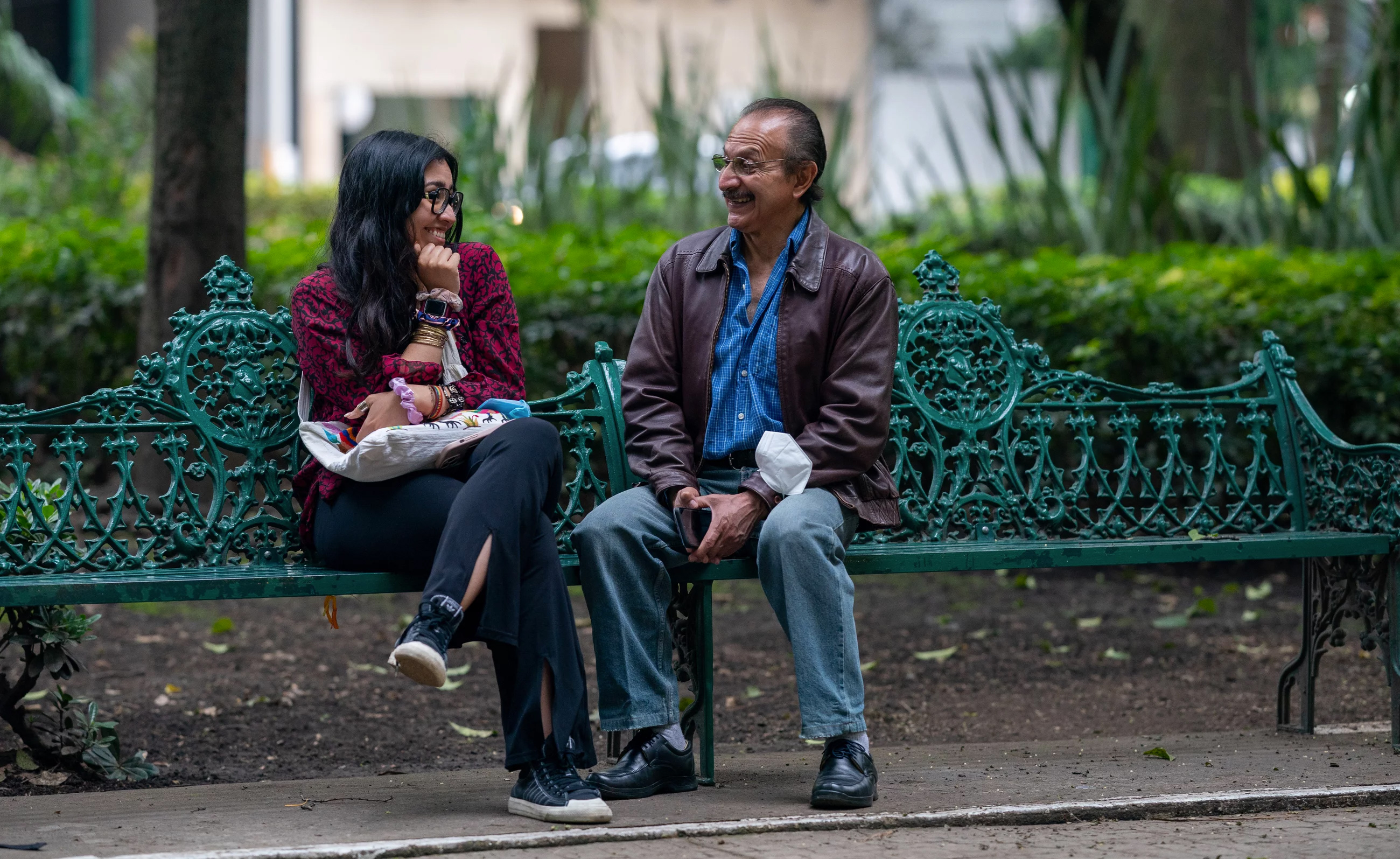 VIEW LARGER Estefania Mitre and her uncle Sergio share memories from family gatherings and Sergio's early days of dancing in July.
VIEW LARGER Estefania Mitre and her uncle Sergio share memories from family gatherings and Sergio's early days of dancing in July. The last one to join the club, inspired by my mom's hectic-but-creative dance career, was my tio Sergio. Though he's my mom's cousin, she's always seen him as just another brother. The 13th sibling of the family. Todos aquí somos familia, as my mom would say.
These days, he's part of the dance group Danzas y Bailes tradicionales Alma Mexicana, which he joined back in 1996. The group had a recital in the Teatro Ferrocarrilero Gudelio Morales earlier this summer to raise money to send group members to Turkey for a dance tour. Sergio enlisted as part of the group that is trying to head to Turkey.
 VIEW LARGER Members of the group Danzas y Bailes tradicionales Alma Mexicana perform a regional dance from Jalisco, México, at México City's Teatro Ferrocarrilero Gudelio Morales in July.
VIEW LARGER Members of the group Danzas y Bailes tradicionales Alma Mexicana perform a regional dance from Jalisco, México, at México City's Teatro Ferrocarrilero Gudelio Morales in July. 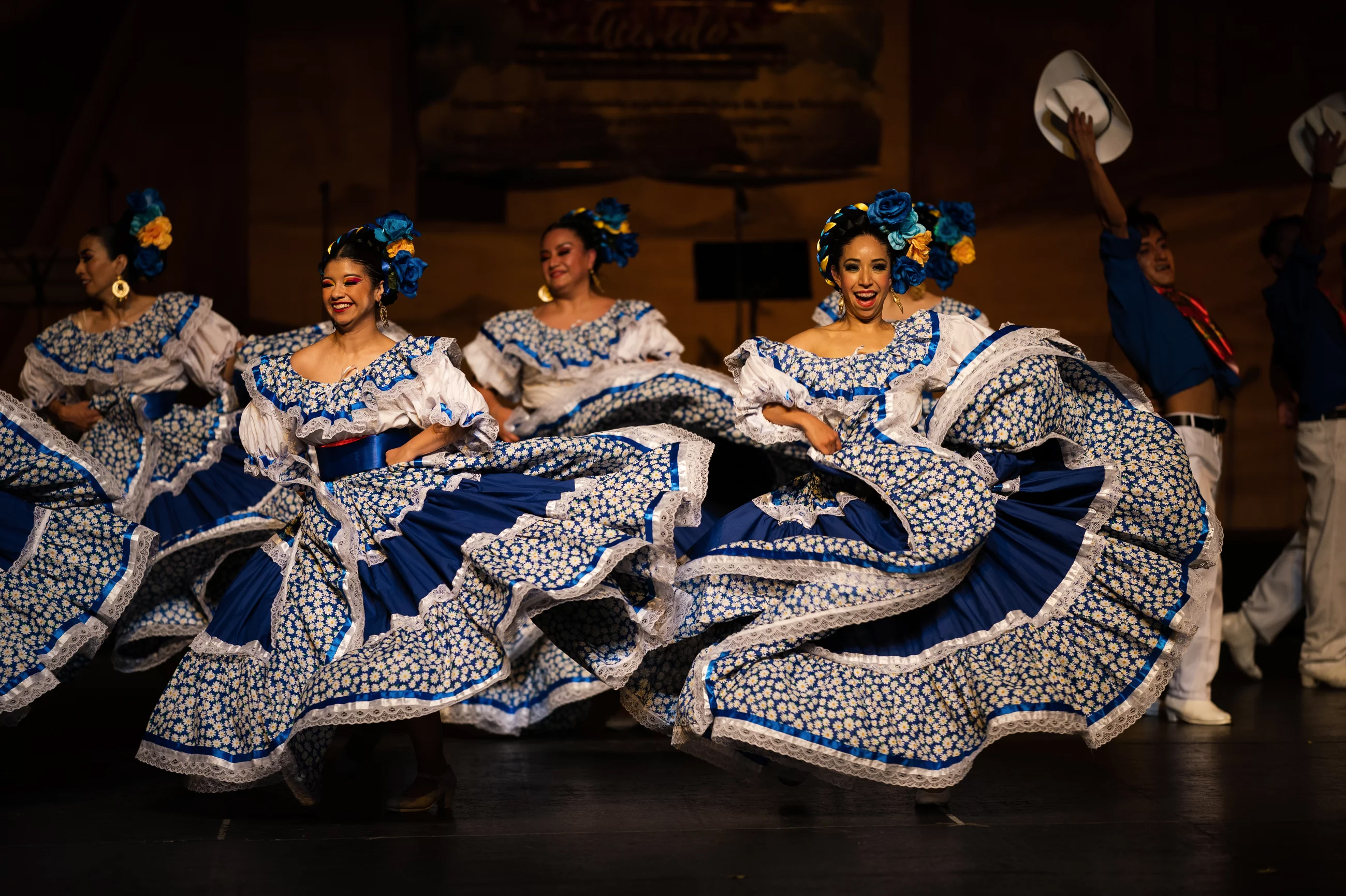 VIEW LARGER Members of the group Danzas y Bailes tradicionales Alma Mexicana perform a regional dance from Sinaloa, México, at México City's Teatro Ferrocarrilero Gudelio Morales in July.
VIEW LARGER Members of the group Danzas y Bailes tradicionales Alma Mexicana perform a regional dance from Sinaloa, México, at México City's Teatro Ferrocarrilero Gudelio Morales in July. 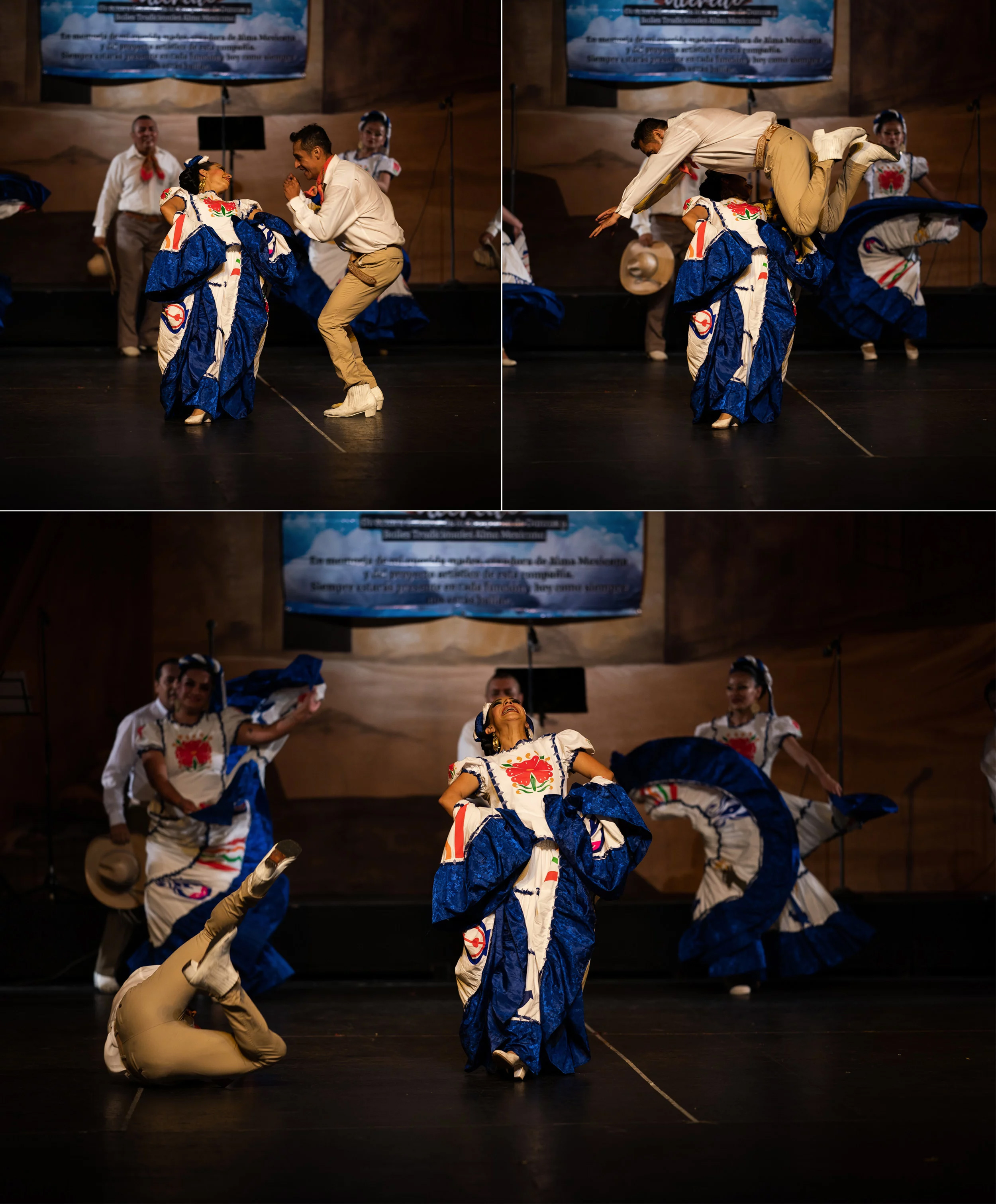 VIEW LARGER Members of the group Danzas y Bailes tradicionales Alma Mexicana perform a regional dance from Sinaloa, México, at México City's Teatro Ferrocarrilero Gudelio Morales in July.
VIEW LARGER Members of the group Danzas y Bailes tradicionales Alma Mexicana perform a regional dance from Sinaloa, México, at México City's Teatro Ferrocarrilero Gudelio Morales in July. 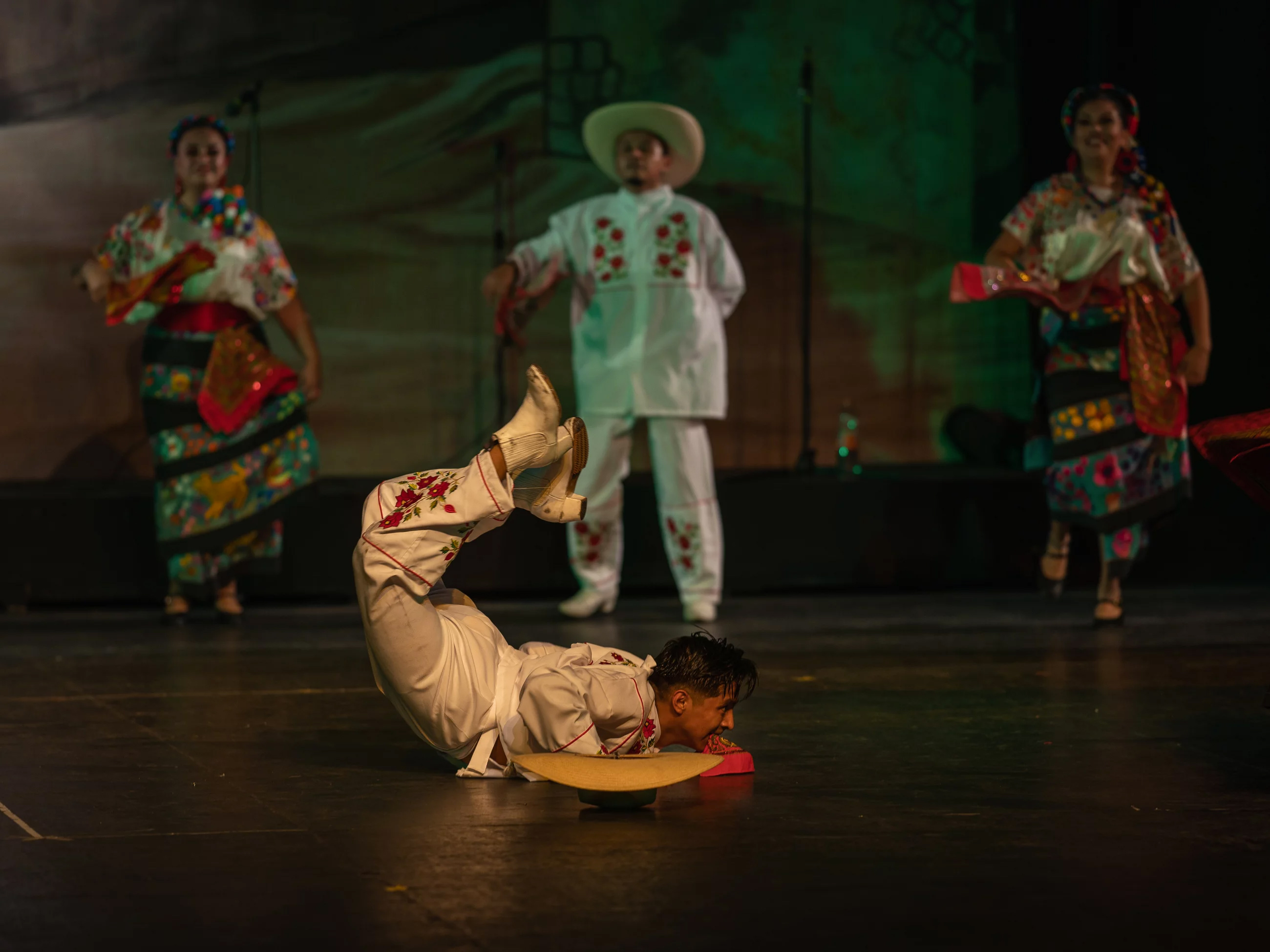 VIEW LARGER Members of the group Danzas y Bailes tradicionales Alma Mexicana perform a regional dance from Guerrero, México, at México City's Teatro Ferrocarrilero Gudelio Morales in July.
VIEW LARGER Members of the group Danzas y Bailes tradicionales Alma Mexicana perform a regional dance from Guerrero, México, at México City's Teatro Ferrocarrilero Gudelio Morales in July. 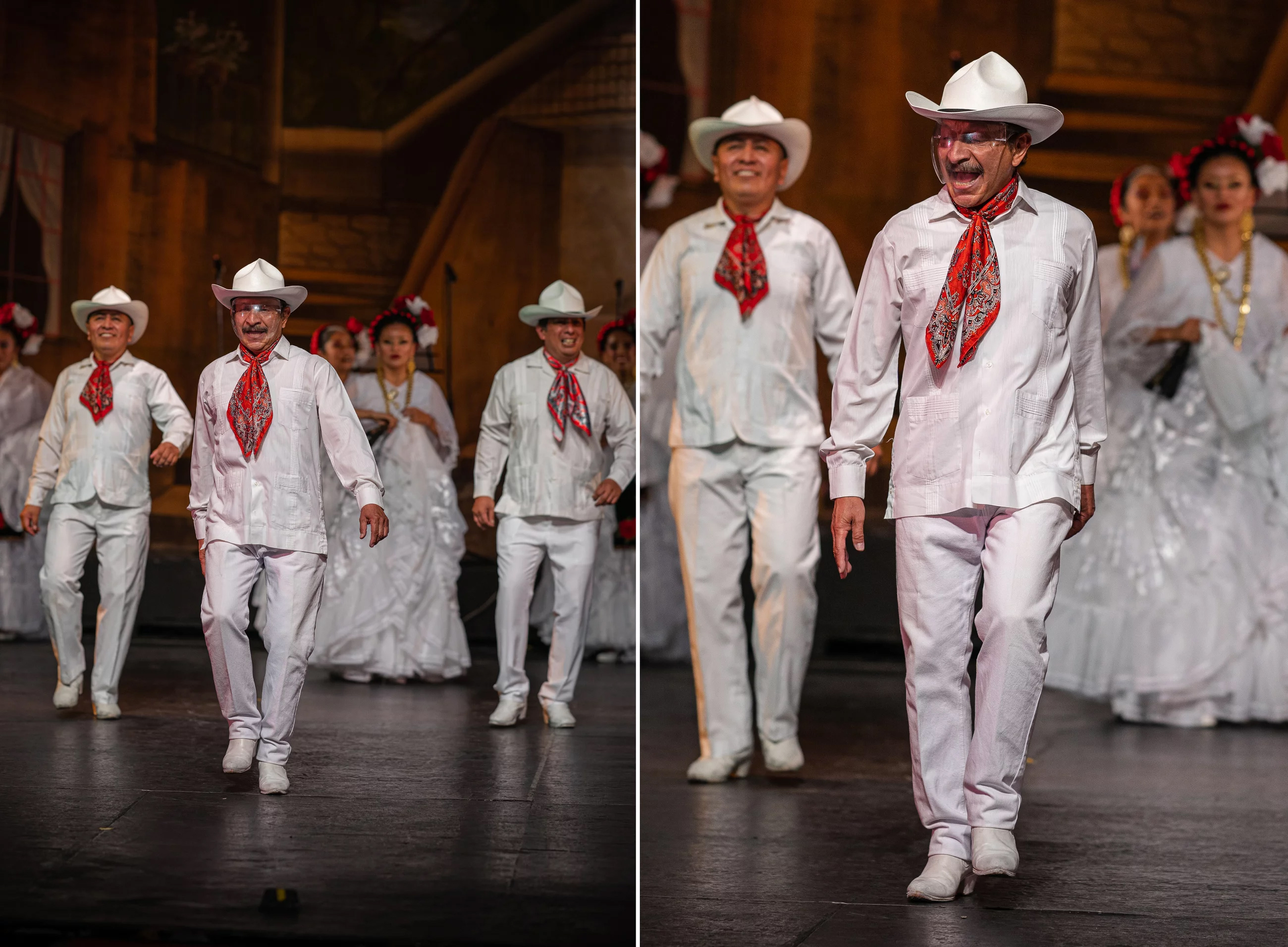 Tio Sergio dances at México City's Teatro Ferrocarrilero Gudelio Morales in July.
Tio Sergio dances at México City's Teatro Ferrocarrilero Gudelio Morales in July.
Sergio is 63 and, as a proud senior citizen, brings up his INAPAM (Instituto Nacional de las Personas Adultas Mayores) card — Mexico's discount card for people over 60 years old — whenever he talks about his age — he's been honing his dance skills on and off throughout the last 42 years.
In the beginning, as my family likes to say, he was not good at dancing.
But his discipline paid off as time went by.
 VIEW LARGER Tio Sergio performs a regional dance from the Mexican state of Jalisco in 2022 (left) and 1982 (right).
VIEW LARGER Tio Sergio performs a regional dance from the Mexican state of Jalisco in 2022 (left) and 1982 (right). 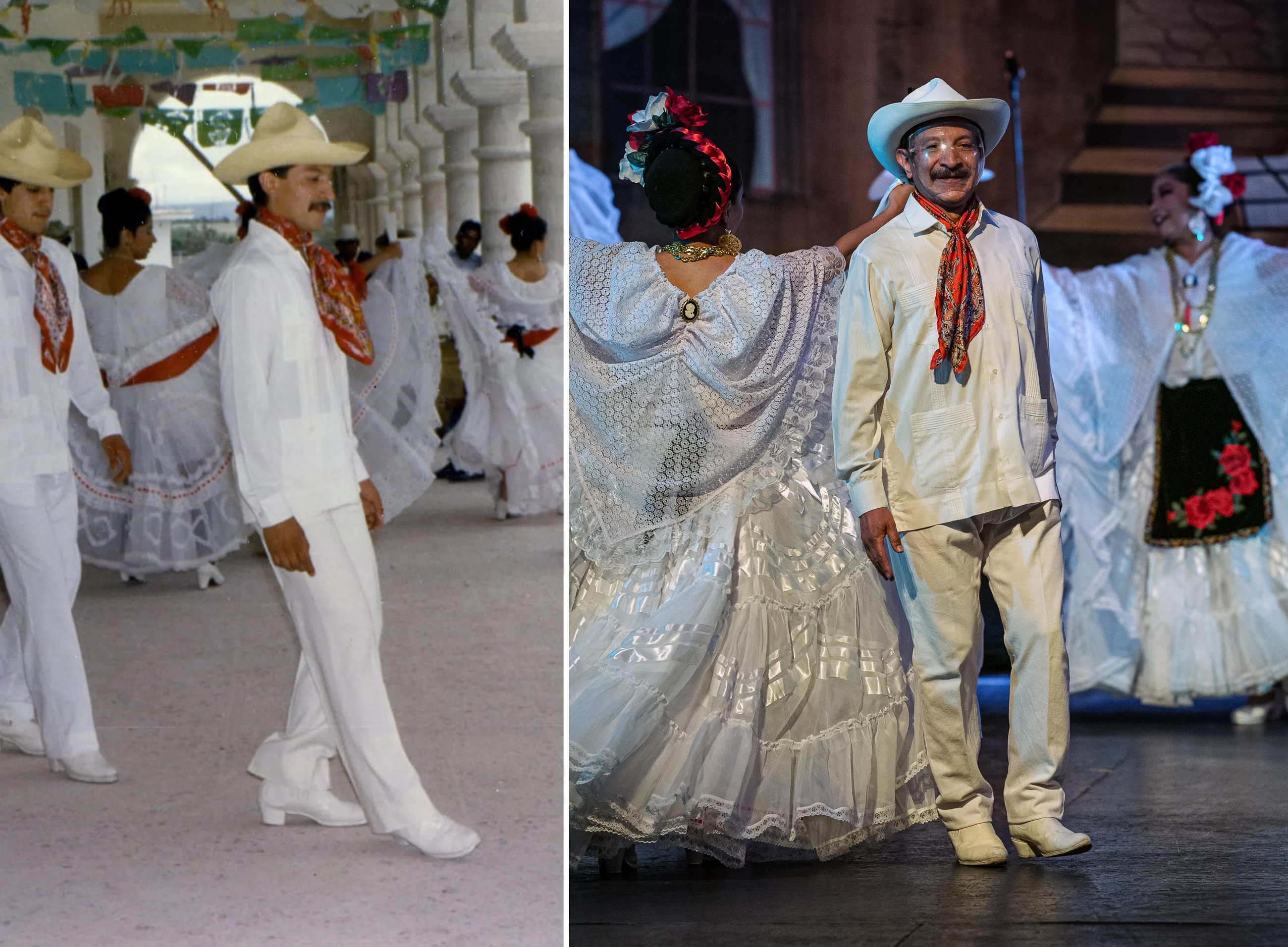 VIEW LARGER Tio Sergio performs a regional dance from the Mexican state of Veracruz in 1982 (left) and 2022 (right).
VIEW LARGER Tio Sergio performs a regional dance from the Mexican state of Veracruz in 1982 (left) and 2022 (right). 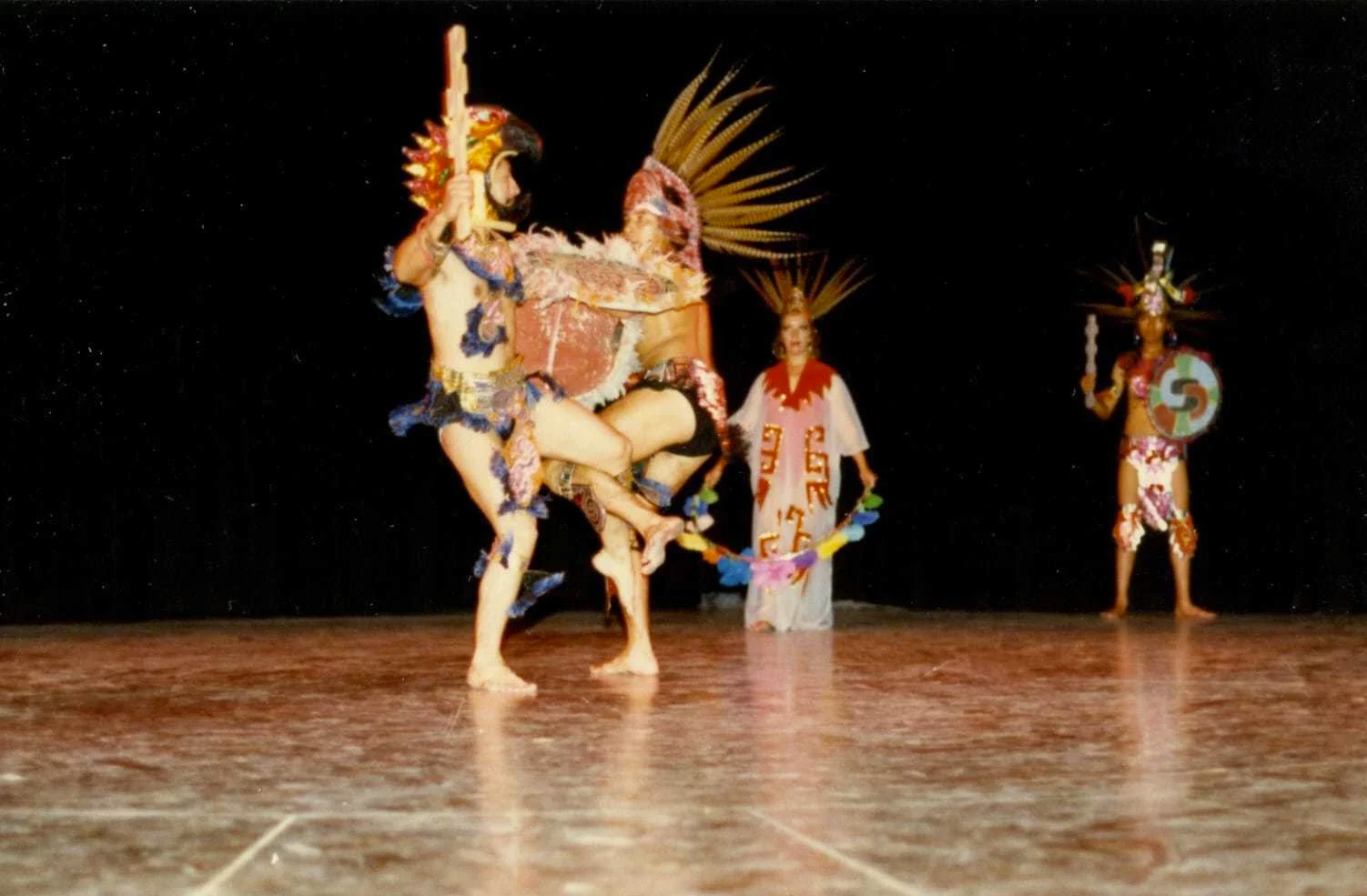 VIEW LARGER Tio Sergio (left) performs an Aztec dance in 1990.
VIEW LARGER Tio Sergio (left) performs an Aztec dance in 1990. When I started dancing, my mom told me my tio's story, about how he would never miss a practice and, even when he was only backstage or on the background, he would never give up.
My tio's eagerness to hone his skills and, as he says, "estar en forma" (stay in shape) have motivated him to continue dancing, even at this stage of his life.
 VIEW LARGER Tio Sergio performs a regional dance from Veracruz, México — one of his favorite regional dances from México — at México City's Teatro Ferrocarrilero Gudelio Morales in July.
VIEW LARGER Tio Sergio performs a regional dance from Veracruz, México — one of his favorite regional dances from México — at México City's Teatro Ferrocarrilero Gudelio Morales in July. 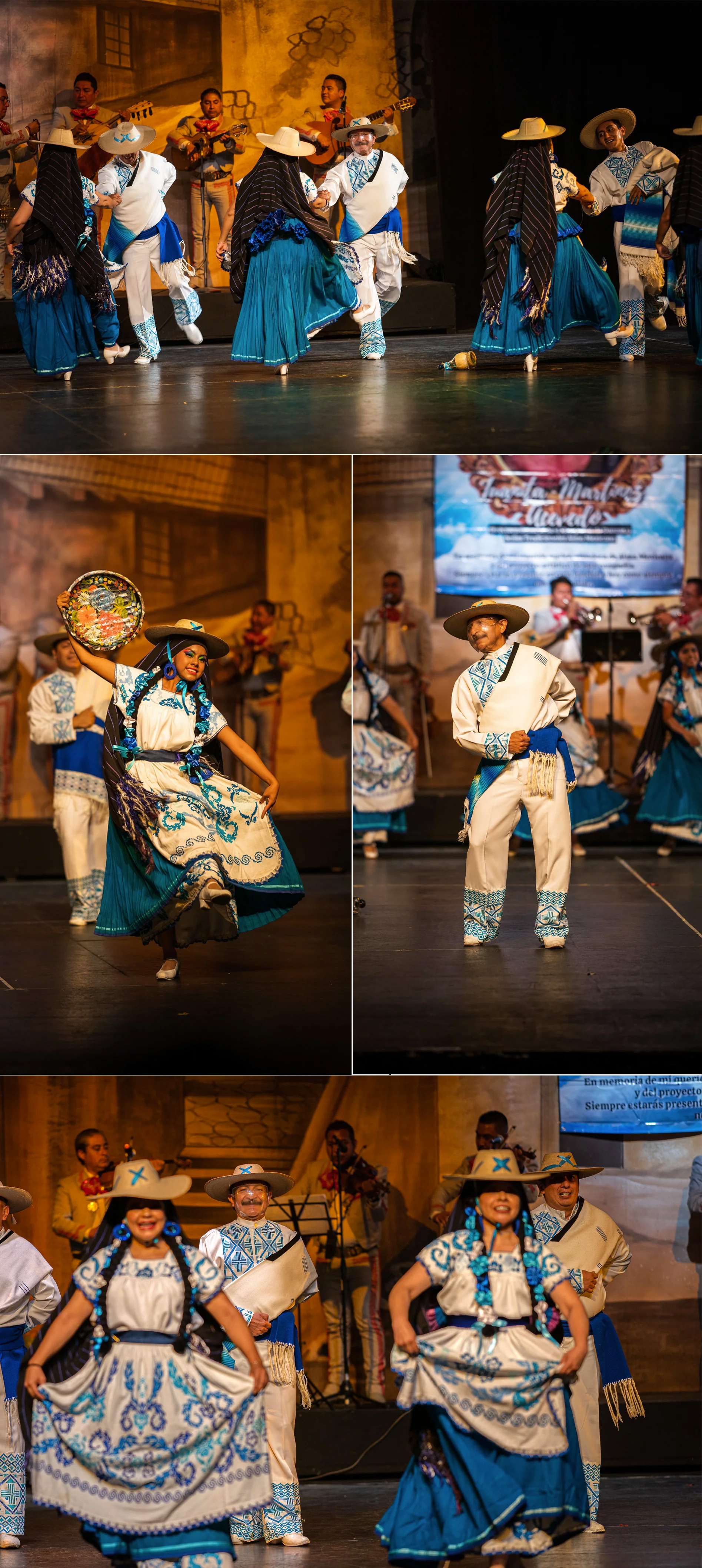 Tio Sergio performs a regional dance from Michoacán with his group members at México City's Teatro Ferrocarrilero Gudelio Morales in July.
Tio Sergio performs a regional dance from Michoacán with his group members at México City's Teatro Ferrocarrilero Gudelio Morales in July.
 VIEW LARGER Tio Sergio performs a regional dance from Veracruz, México — one of his favorite regional dances from México — at México City's Teatro Ferrocarrilero Gudelio Morales in July.
VIEW LARGER Tio Sergio performs a regional dance from Veracruz, México — one of his favorite regional dances from México — at México City's Teatro Ferrocarrilero Gudelio Morales in July. My mom was a huge influence on Sergio — she was the only woman among all her brothers. They all started two folklórico dance groups, one in Ciudad Nezahualcóyotl, located in the state of México — outside of México City — and another one in Durango city, in the state of Durango. My mom wore different hats: director, dancer, teacher. She's always shared stories of kids she's inspired to dance and continue a professional dance career up to this day.
 VIEW LARGER Left: Estefania's mom, Patricia Mitre, and her tio Sergio dance to Nuevo León polkas in 1982. Right: Patricia performs a regional dance from the state of Veracruz in 1979.
VIEW LARGER Left: Estefania's mom, Patricia Mitre, and her tio Sergio dance to Nuevo León polkas in 1982. Right: Patricia performs a regional dance from the state of Veracruz in 1979. 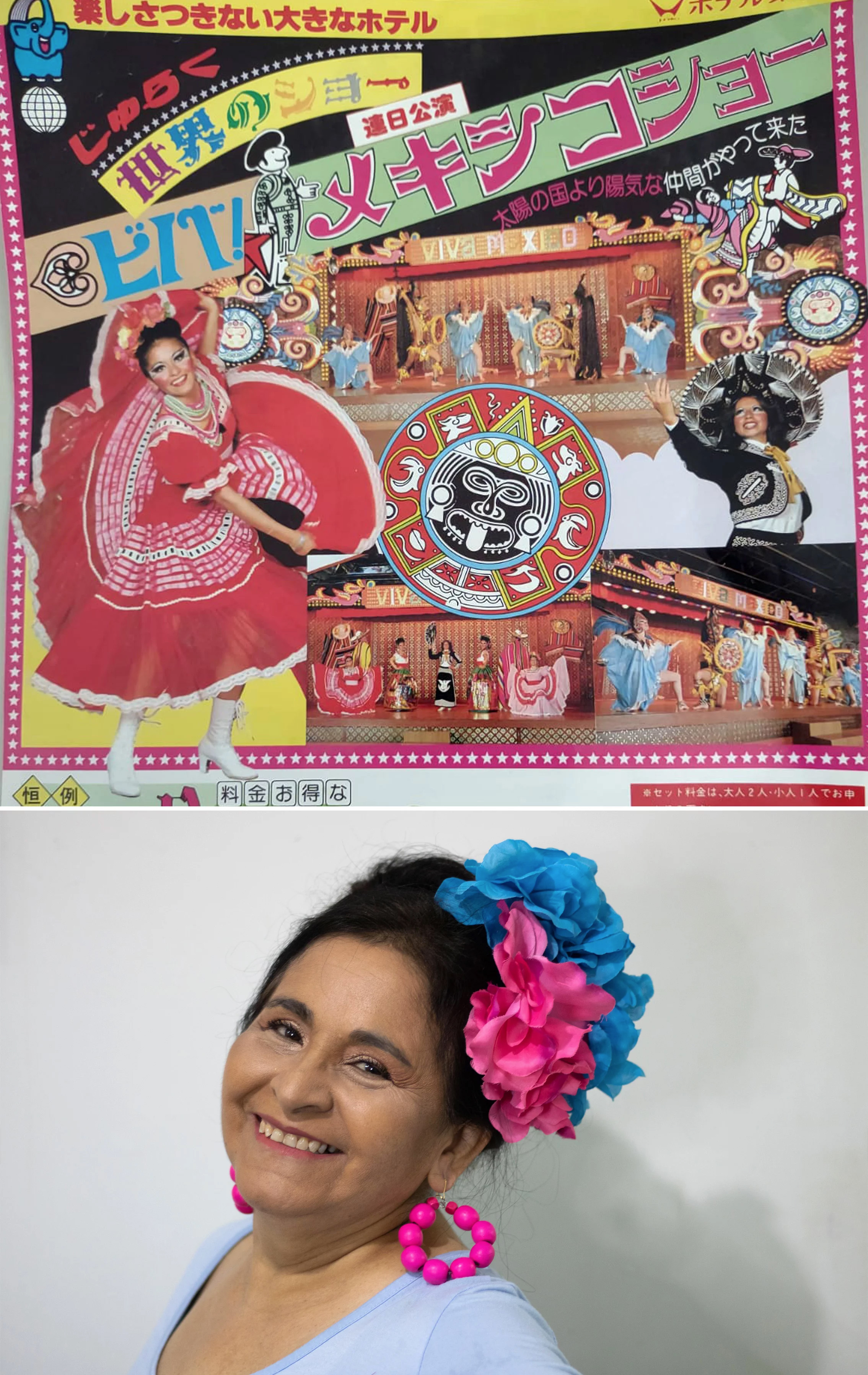 VIEW LARGER Top: Estefania's mom, Patricia Mitre (left), performs in stop in Itō, Japan, on a tour through Japan with the group Semblanzas de México in 1981. Bottom: Patricia in 2021.
VIEW LARGER Top: Estefania's mom, Patricia Mitre (left), performs in stop in Itō, Japan, on a tour through Japan with the group Semblanzas de México in 1981. Bottom: Patricia in 2021. My mom gave up her career to focus on raising my brother and me. Sometimes I ask her if she misses it, and she looks at me and says, "Disfruto más verte a ti realizada." (I enjoy seeing you thrive more.)
As the years have passed — at least on my mom's side of the family — my brother and I broke the folklórico tradition, but even when most of my uncles and my mom stopped dancing, the joy in their eyes when they show us pictures or show off their moves motivates me to keep on dancing.
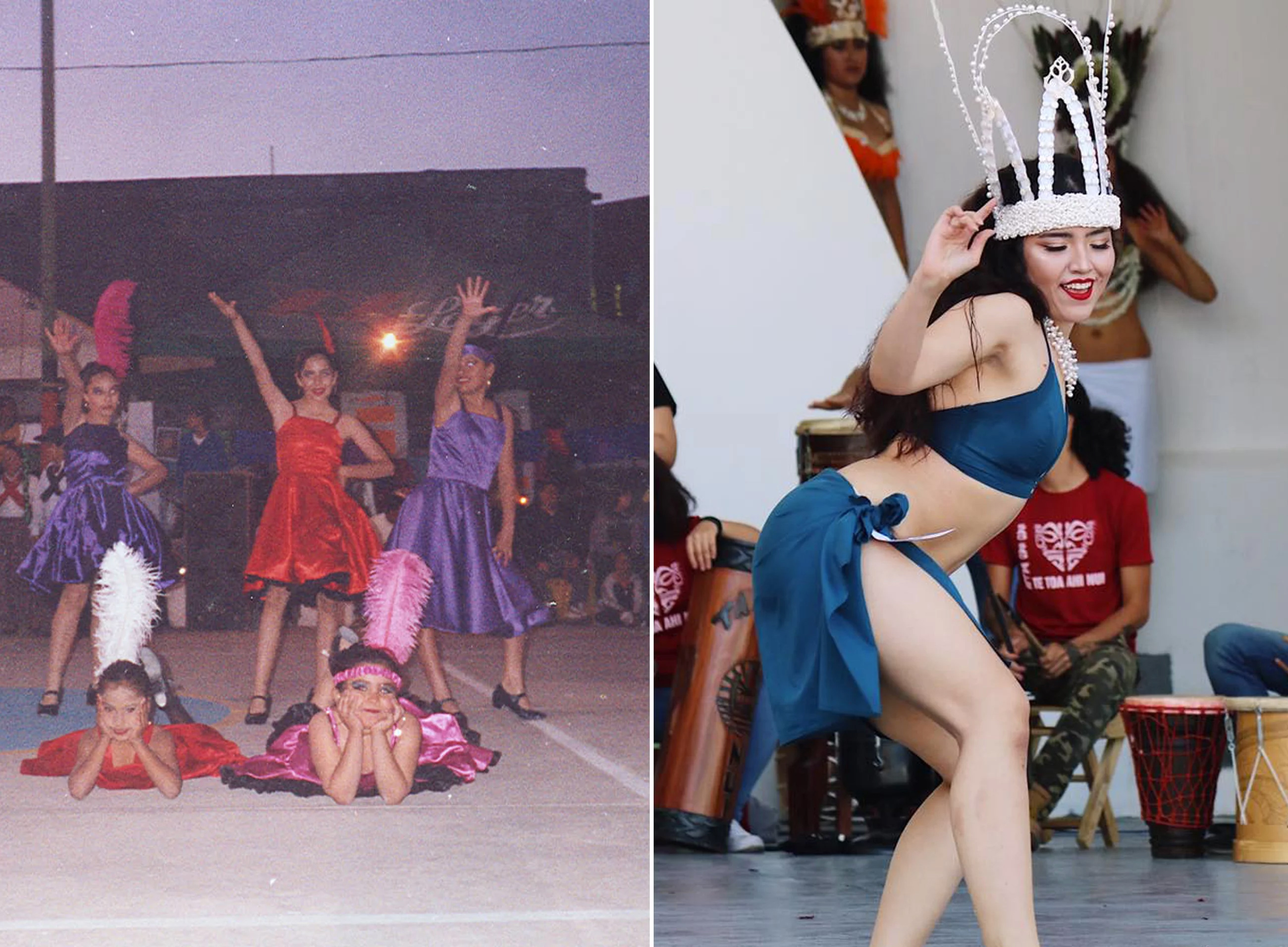 VIEW LARGER Left: Estefania in her first show, performing cancan in Juárez, México, in 2004. Right: Estefania performs at a Tahitian dance competition in México City in 2019.
VIEW LARGER Left: Estefania in her first show, performing cancan in Juárez, México, in 2004. Right: Estefania performs at a Tahitian dance competition in México City in 2019. I found a passion of my own, which is learning different dance rhythms, but the discipline and love to the dance and art is instilled in my soul.
Dance is a common denominator in my family.
A tradition I hope I can keep building on.

By submitting your comments, you hereby give AZPM the right to post your comments and potentially use them in any other form of media operated by this institution.